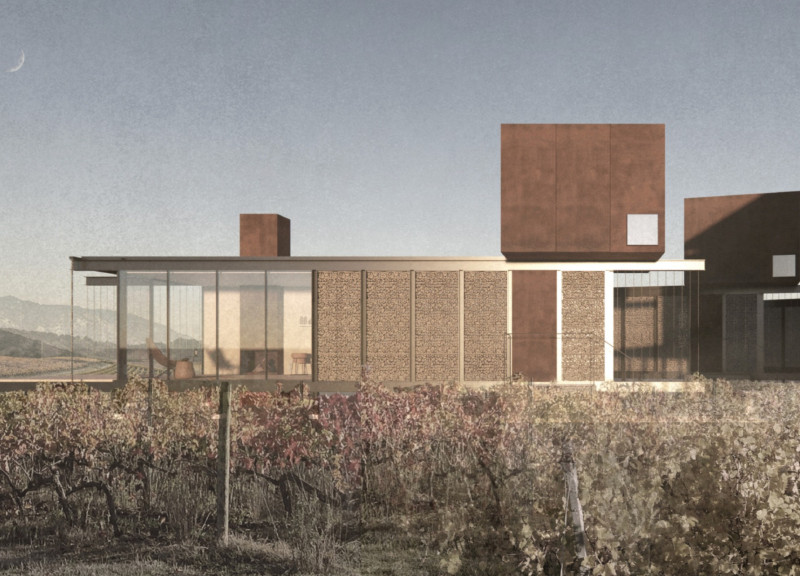5 key facts about this project
The guesthouse combines private and communal spaces, allowing guests to engage with both the interior comforts and the external vistas. Each cabin is strategically placed to balance privacy with stunning views of the vineyards, reinforcing the relationship between the built environment and nature. The structure utilizes a mix of materials that are both functional and expressive, reflecting a commitment to craftsmanship and sustainable practices.
Architectural Materiality and Sustainability
A key aspect of this project is the thoughtful selection of materials that resonate with the natural surroundings. Corten steel, known for its durability and weathered appearance, forms a protective outer layer, enhancing the architectural language with organic tones. Recycled crushed brick is incorporated into the cladding, supporting a sustainable approach by utilizing reclaimed resources. Extensive use of glass allows natural light to flood the interiors, reinforcing the connection with the outside environment.
The interior spaces feature warm wooden finishes, contributing to a comfortable atmosphere that invites relaxation. Concrete footings provide structural integrity while aligning with contemporary construction methods. Additional sustainable practices include a rainwater harvesting system, demonstrating a commitment to resource efficiency.
Unique Design Approaches
What sets the Tili Vino Guesthouse apart from other projects in similar contexts is its modular design, which allows for adaptability in layout and function. The configuration of cabins promotes interaction while ensuring privacy for guests, balancing communal and solitary experiences. The incorporation of open spaces creates a fluid flow between indoor and outdoor areas, enhancing the overall guest experience. Architectural elements, such as large windows and terraces, facilitate views of the vineyard and surrounding landscape, inviting reflections on the winemaking process.
Moreover, the design integrates specific areas for social engagement, like communal dining tables and outdoor seating, fostering a sense of community among visitors. These unique features reflect a nuanced understanding of not just the physical spaces but the social dynamics that are integral to wine tourism.
Experiential Opportunities
The tasting space adjacent to the guesthouses serves as a focal point for wine-related activities, where design and function converge. This area is characterized by high ceilings and expansive windows, offering panoramic views of the winery and creating an inviting atmosphere for visitors to engage with the local offerings. The harmonious integration of architectural design with the viticultural setting amplifies the overall experience for guests, encouraging them to immerse themselves in the local culture and nature.
For a comprehensive understanding of the Tili Vino Guesthouse and Tasting Space, including the architectural plans, architectural sections, and detailed architectural designs, readers are encouraged to explore the project presentation. By examining these elements, you can gain deeper insights into the architectural ideas that inform this project and the unique aspects that define its contribution to contemporary architecture in the context of wine tourism.


























